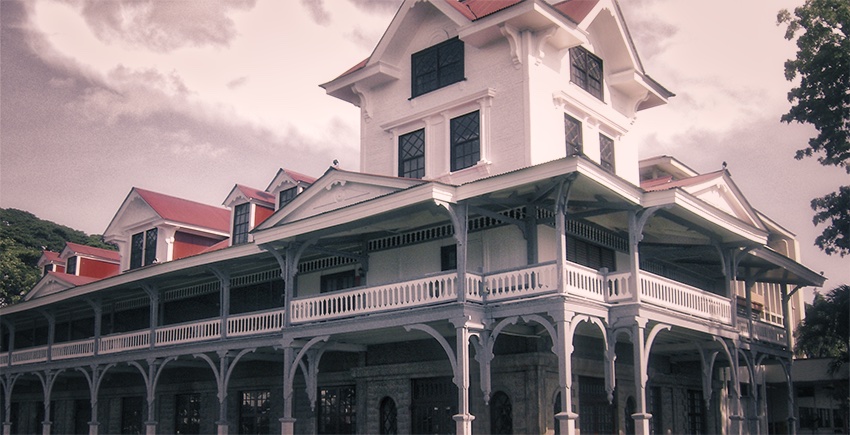
Dependence, Independence and Interdependence
Sunday, 12 June 2011 20:44 Liling Magtolis Briones / Boiled Green Bananas (Business Mirror)
Yesterday we celebrated our 113th Independence Day. That is, independence from the Spaniards. On June 12, 1898, we declared ourselves independent from the crushing heel of Spanish colonialism, only to fall into the deceptive clutches of American imperialism.
We declared ourselves independent, but became a colony of the United States after a bloody war that killed thousands of Filipinos. It was a war characterized by the burning of villages, a tactic replicated 60 years later in Vietnam. It was a war characterized by cholera, dysentery and typhoid epidemics—health curses we have never fully recovered from.
Our years as a colony of the United States were supposed to be years of preparation for eventual independence. This was the period when the chains of economic dependence on the United States were firmly locked into place through the Bell Trade Act, which allowed unlimited entry of their goods into our country, as well as exploitation of our natural resources.
As a United States colony, we became a magnet for the hegemonic designs of Japan. We were dragged into World War II. Thousands of Filipinos died in a war not of their making. A few living Filipinos can describe that horrific period—the rape of our women, indescribable torture for our guerrillas, our infants tossed into the air and bayoneted, and bellies of pregnant women ripped open by the Japanese sword.
On July 4, 1946, we declared once more our independence. This time it was independence from the United States. This independence turned out to be empty. Our economy and infrastructure were totally destroyed by the war. We had become addicts and junkies of imported goods; we did not have the capacity to produce consumer goods ourselves. Like our economy, our national security was chained to that of the United States through the Military Bases Agreement.
Independence in the age of interdependence
Yesterday we commemorated our independence from Spain. It was good to reenact the Kawit declaration. It was fun to watch the parade, take photos of the “3-D flag” and learn from the educational shows on TV.
Our celebration took place in the age of interdependence and globalization. What does our independence mean in the Year of Our Lord 2011? How do we define it in terms of globalization? How do we define independence at a time of rising levels of poverty and unemployment, threats of climate change, unbalanced economic growth, massive social problems, corruption in the government, and threats to our national security? The challenge to all of us, especially our nationalists, educational institutions, leading citizens and opinion-makers is to rethink and redefine the meaning of independence at this time and age.
Weeping with joy on Independence Day
When I was a child growing up during the 1950s, Independence Day celebrations were big events, especially the parade. People would mass along the streets and watch the floats depicting various aspects of the war against Japan, smiling children and young people waving flags, local beauties and, of course, the soldiers.
My mother would weep openly while watching the soldiers march by. The sight of them brought back memories of the years of Japanese brutality and the gallantry of our guerrillas. For her and the ordinary Filipinos of the time, the soldiers and guerrillas were the heroes who gave us our independence.
I wonder if we still weep with joy whenever Independence Day comes.
“Sands and Pebbles” is not a building project.
When Party-list Rep. Raymond Palatino of Kabataan testified before the Senate Committee on Education, he included Silliman University on his list of schools with “bizarre and unfathomable” miscellaneous fees. He cited the “Stones and Pebbles fee” of P165, which is imposed on elementary-school children.
ABS-CBN picked up the news item, with Anthony Taberna and his team criticizing the university in the show Dos por Dos. One of the hosts commented sarcastically that the university must be making a building and is charging stones and pebbles to the children.
That day, I was swamped with angry text messages from Silliman alumni who insisted that the university should demand an apology from Palatino and Taberna. After all, the “Stones and Pebbles fee” of P165 will not go to a building project. “Stones and Pebbles” is the school paper of the elementary pupils of Silliman University. The name is patterned after the university’s internationally famous literary journal, Sands and Coral. But all’s well that ends well. Palatino and Taberna have apologized to the university.
ABOUT THE AUTHOR :
Leonor Magtolis Briones
Accounting (1958);
Professor Briones is former National Treasurer of the Republic of the Philippines. She is an Outstanding Sillimanian in the field of Fiscal and Public Administration, and has served Silliman University as Chairperson of the Board of Trustees. She holds a Post-Graduate Diploma in Development Organization major in Public Enterprises and a Certificate in Policy for Public Enterprise from Leeds University in England and the Harvard Institute for International Development, respectively. Presently, she is professor at the National College of Public Administration and Governance at the University of the Philippines. Professor Briones maintains a regular column, “Boiled Green Bananas, ” in the Business Mirror.


